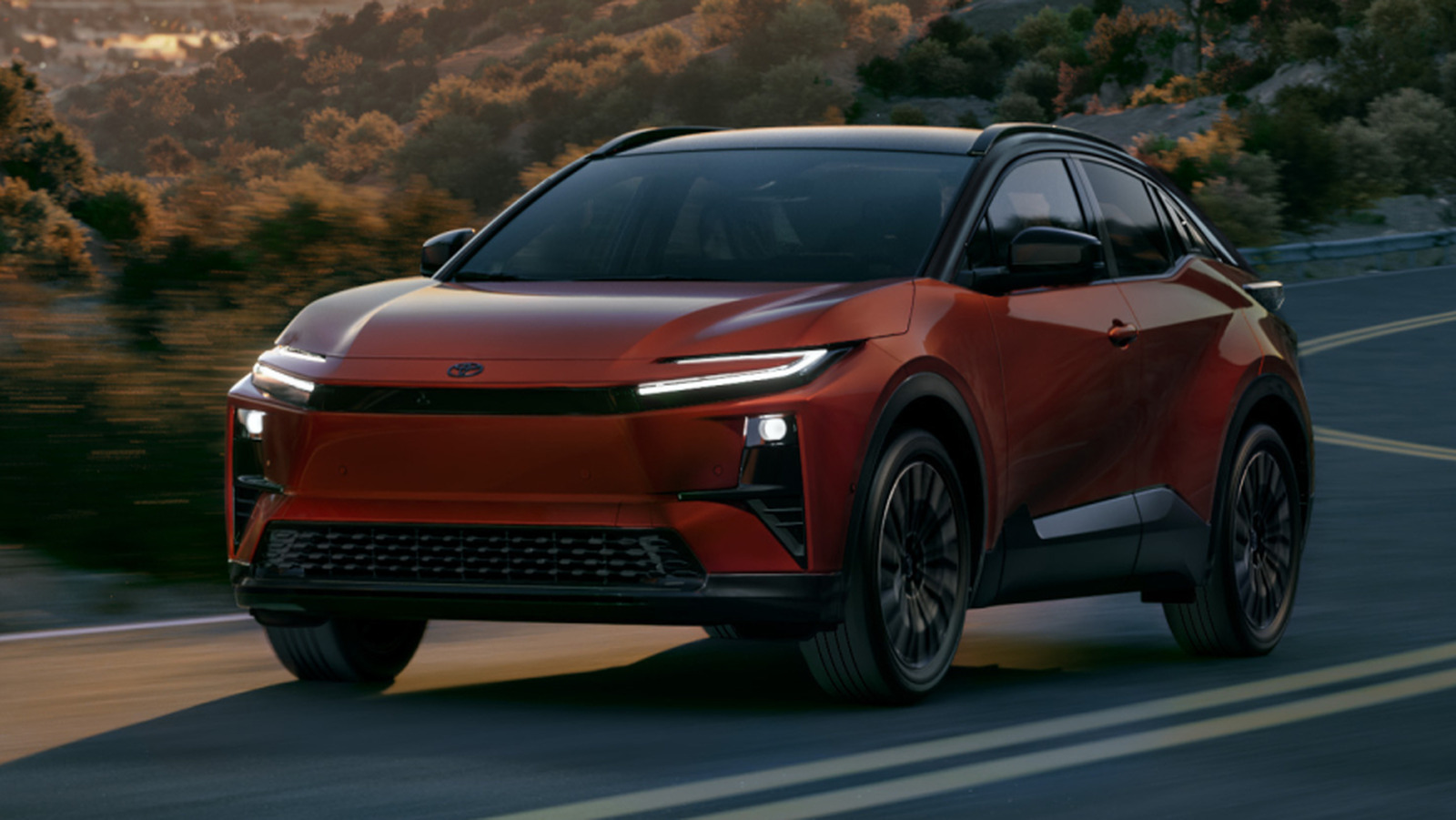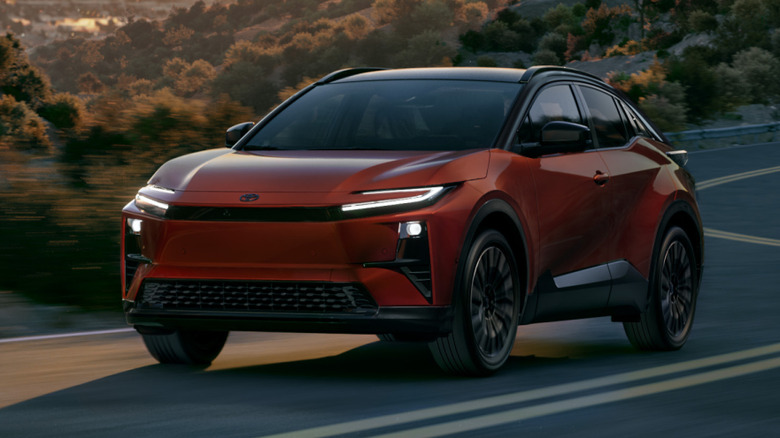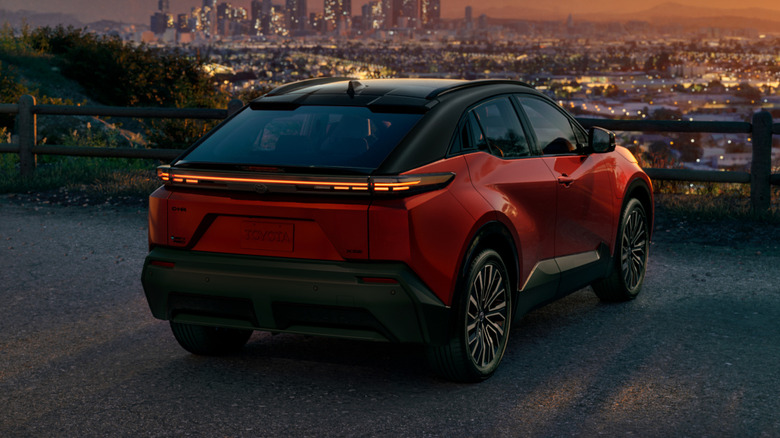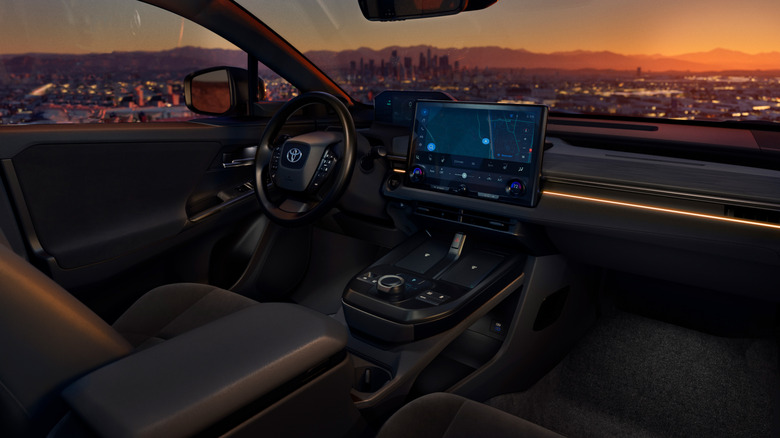Toyota debuted the 2026 bZ crossover yesterday, a facelift for what used to be called the bZ4X that should make the middling electric SUV more competitive. Now Toyota has revealed another fully electric car for the U.S. market: the 2026 C-HR. Toyota discontinued the first-gen C-HR in the U.S. after 2022, and when the second generation of the subcompact crossover debuted for other markets in 2023, Toyota said it wouldn’t be coming to our shores. Then, a couple months ago, Toyota released the electric C-HR+ in Europe, which is larger and has unique (and slightly less funky) styling compared to the normal C-HR. That model is what the U.S. is getting as, plainly, the C-HR.
Toyota says the 2026 C-HR is the 20th electrified model it has sold in the U.S., but it’s only the second EV in its lineup and just the third one ever, if you include the short-lived RAV4 EV. It’s built on Toyota’s e-TNGA platform, which also underpins the bZ and its Subaru Solterra and Lexus RZ siblings.
Wait, it has how much power?
While the bZ comes in a couple different battery and powertrain configurations, the C-HR has just one setup on offer, and it’s a lot more powerful than you might expect. All-wheel drive is standard, with an electric motor at each axle putting out a total of 338 horsepower. That’s 38 hp more than a GR Corolla, and more than double the amount of horses put out by the old C-HR’s naturally aspirated 2.0-liter inline-4. Toyota says the electric C-HR will hit 60 mph in just 5 seconds, making it one of the quickest cars in the brand’s lineup.
Like upper versions of the bZ the new C-HR will have a 74.7-kWh battery pack, which will give it a Toyota-estimated range of 290 miles, putting it in the middle of the new bZ lineup. It’ll have the Tesla-style NACS charge port with fast charging capabilities that can bring you from 10% to 80% in about half an hour, plus an 11-kW on-board AC charger. There’s no mention of a heat pump like in the bZ, but the C-HR does have a battery pre-conditioning system and adjustable regenerative braking.
A familiar interior
I think the C-HR looks damn good, too. It’s not quite as strange as the gas-powered C-HR sold in other markets, which is a shame, but it’s still pretty funky. At 177.9 inches long and 63.8 inches tall the C-HR is 6.7 inches shorter in length and 1.2 inches shorter in height than the bZ, but about half a foot longer and a little taller than the old C-HR. Toyota’s electric corporate face and rear light bar flow well with the angular body work, and like the old model the new C-HR has a contrasting-color floating roof design with hidden rear door handles. Despite the coupe-like roofline, the C-HR has up to 25.4 cubic feet of cargo space, more than a Corolla hatchback.
The interior is basically identical to the bZ, at least for passengers up front. Every C-HR will have a 14-inch touchscreen running Toyota’s latest software (and wireless Apple CarPlay and Android Auto), two wireless phone chargers, three USB-C ports, heated front seats and a heated steering wheel, front and rear parking sensors, a power tailgate, customizable ambient lighting, rain-sensing wipers, climate controls for rear-seat passengers and lots of active-safety features. Upgrade from the SE to the XSE model and you get suede-trimmed seats, 20-inch wheels, a power passenger seat, a digital rear-view mirror, surround view cameras, traffic-jam assist and lane-change assist. Other available features include a panoramic sunroof and a better JBL sound system.
Toyota says the 2026 C-HR will reach dealers at some point in 2026. Pricing hasn’t been announced yet, but I’m guessing it’ll be a bit cheaper than the all-wheel-drive bZ.





